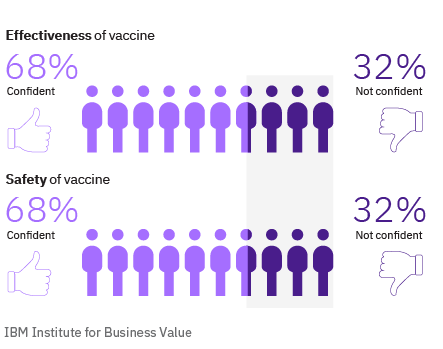An injection of hope: Life after the COVID-19 vaccine
Getting a COVID-19 vaccine offers the promise of an end to isolation. After more than a year of quarantine and social distancing, it instills hope that family vacations, festivals, and care-free dinners with friends are on the horizon. It gives people a reason to look forward and start making plans to socialize once again.
And each day, the numbers seem brighter. At the beginning of April, the United States was vaccinating an average of 3 million people per day. And in March, US President Joe Biden announced that pharmaceutical rivals Johnson & Johnson and Merck would team up to accelerate the manufacture of a single-dose vaccine. This is expected to help Biden deliver on his promise to produce enough vaccine for every adult in the US by the end of May—two months earlier than previously projected. And the UK’s Office for Budget Responsibility set out a scenario that could have all UK adults vaccinated with the first of two necessary doses by the end of June.
As vaccination rates go up and COVID deaths go down, global consumers are starting to consider what life will look like after a majority of people have been vaccinated. Will the “new normal” people created to cope with pandemic lockdown restrictions be replaced by old routines? Will something entirely different emerge? And how will businesses need to adapt? To better understand people’s perspectives on the COVID-19 vaccines, and what they plan to do once they're vaccinated, the IBM Institute for Business Value (IBV) surveyed more than 15,000 adults across 9 countries in February 2021.
Will the “new normal” be replaced by old routines? Will something entirely different emerge? And how will businesses need to adapt?
Overall, we found that most people are confident in the safety, effectiveness, and distribution of the vaccines, which pharmaceutical companies have developed at breakneck speeds. While drug approval processes were shortened and streamlined, it seems that greater transparency has helped drive consumer confidence. Even as new variants of the virus spread, more than half of respondents say they expect the vaccine to keep them protected.
Globally, two-thirds of unvaccinated people say they plan to receive the vaccine when eligible. The highest proportion of people who intend to get vaccinated are in Brazil and Mexico—two countries that were hit hard by the pandemic.
Optimism, uncertainty, and distrust: While most people are confident in the safety and effectiveness of the vaccine, 1 in 3 are not.

However, roughly 1 in 3 people globally still view the vaccine with distrust and uncertainty. Rather than a guarantee of safety, they see the shot as a new risk to navigate. And as we look across countries, which have very different healthcare systems and distribution plans, distinct perspectives start to emerge. Confidence in the safety, efficiency, and overall rollout of the vaccine are very high in China, India, and the UK—and below average in the US.
Getting the jab
It’s possible that public uncertainty will wane as more people receive the vaccine. But as of March, vaccination rates are still very low. 17% of global respondents report being partially or fully vaccinated, while 83% have received no doses.
And it’s unclear when vaccines will be available to everyone who wants one. Nearly 4 out of 5 respondents who want the vaccine expect to receive it this year—but given the slow pace of global distribution, this seems unlikely. In January, the Economist Intelligence Unit (EIU) projected that immunization programs for the majority of the world’s population will continue until mid-2022.
This is critical, as a slow or uneven rollout puts aspirations for near-term herd immunity at risk. Until enough people worldwide are vaccinated, there is a risk that a vaccine-immune variant could emerge. The portion of the population that must be vaccinated against COVID-19 to begin inducing herd immunity is unknown.
Vaccination levels will need to exceed 70% before global consumers will feel comfortable resuming their pre-pandemic lifestyles.
However, many epidemiologists have suggested 60 to 70 percent as a reasonable range. Dr. Anthony Fauci, the leading epidemiologist in the US, has indicated the number could be as high as 85%.
And individuals are being even more conservative in their personal assessments. Based on our February survey, most respondents say that vaccination levels will need to exceed 70% in order for them to feel comfortable returning to life as it was before the pandemic. Assuming current rollout rates, that means many people will not regain pre-pandemic comfort levels until well into 2022.
Amid so much uncertainty, consumers are rethinking the way they want to work, socialize, travel, and shop. They’re considering more factors before they make their decisions, and some are opting out of non-essential activities entirely.
For businesses, that means the battle for market share has become fiercer, with companies fighting for pieces of a smaller pie. As we’ve seen throughout the pandemic, some businesses will benefit from these shifting priorities—and others will need to find new ways to compete.
Read the full report to see how consumer behavior is shifting, and how companies can do more to meet their customers’ changing needs.
Meet the authors
Jane Cheung, Global Consumer Industry Research Leader, IBM Institute for Business ValueSteven Peterson, Global Thought Leader, IBM Institute for Business Value
Dave Zaharchuk, Research Director, IBM Institute for Business Value
Download report translations
Originally published 28 May 2021


